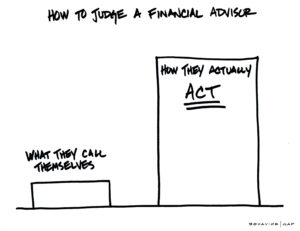You may have seen lots of literature already about the end of the tax year. But if you’ve not yet taken any action, now is the time to do so to protect your savings from tax.
Here is a handy checklist of what to do and what not to do before 5th April.
1. Make the most of your ISA Allowance 
Individual savings accounts have been around now for over 20 years but they still remain one of the most tax-efficient ways of investing. You can invest up to £20,000 in an ISA in the 2019/2020 tax year without paying any income tax, dividend tax or capital gains tax (CGT). This can either be in a cash ISA or a stocks and shares ISA. There is also the Lifetime ISA for 18-39 year olds, although the investment is limited at £4,000 a year. A fourth option is the Innovative Finance ISA which includes peer-to-peer lending. But whichever ISA you choose, the allowances don’t roll over, so use them or lose them.
2. Top up your pension
You’ll have to act quickly but boosting your pension before the end of the tax year is worth considering, especially if your employer will match your contributions up to a particular cap. Tax relief is available on pension contributions up to £40,000 a year or 100% of your income whichever is lower. If you earn more than £110,000 and your income and pension contributions made on your behalf exceed £150,000, your annual allowance will be tapered.
3. Consider your CGT allowance
Your CGT allowance for the 2019/20 tax year is £12,000 which means you won’t pay any tax on the first £12,000 of any gains you make from selling shares, investments, property or other assets. You can make effective use of this allowance by selling shares in separate batches over two different tax years if the amount you’d gain would take you over the limit. CGT is not paid on your main home or any assets held in a pension or ISA.
4. Don’t open two ISAs of the same type
Make sure you don’t open two of the same type of ISA in one tax year. You can’t, for example, pay into two new cash ISAs in the same period. Instead, think about splitting your allowance across a combination of different ISAs. You might put some money in a cash ISA for easy availability and some in an investment ISA (which could potentially give you better returns but would need to be tied up for longer).
5. Remember you don’t have to use all of your ISA allowance in one go
If you’re keen to make the most of your allowance but don’t know where to invest it straightaway, it’s possible to make deposits throughout a tax year. So you could put your money into an instant-access cash ISA and then move it later to an investment or innovative finance ISA. This is useful if you’re unsure of market conditions or just want to take more time over your investment decisions. When you do invest, it means you wouldn’t be getting a full year’s worth of growth but at least you’d have done something with this year’s allowance.
6. Don’t exceed your pension allowances
If you do decide to top up your pension, be aware that the Lifetime Allowance is £1,055,000 for the 2019/20 tax year. This is the maximum amount you can hold within all your pension savings without having to pay extra tax when you withdraw from them. You also need to make sure you don’t exceed the pension annual allowance to avoid a tax charge.
If you have any questions about maximising your tax allowances, please do not hesitate to get in touch.
Sources
https://www.barclays.co.uk/smart-investor/news-and-research/investment-strategies/six-dos-and-donts-before-the-end-of-the-tax-year/



